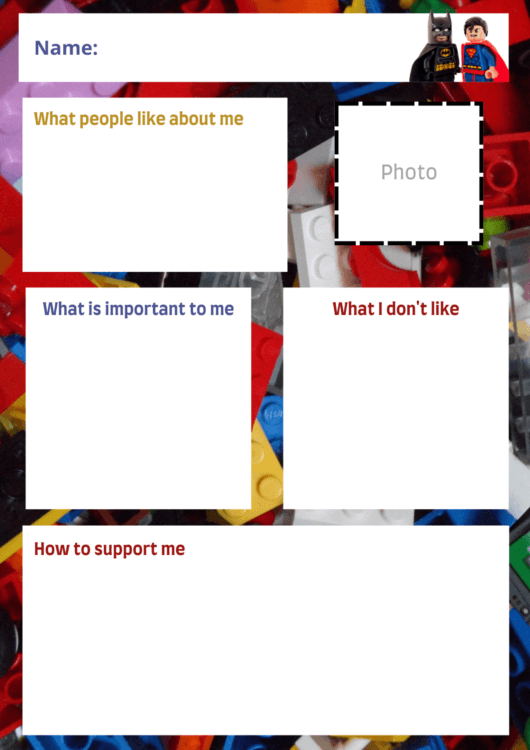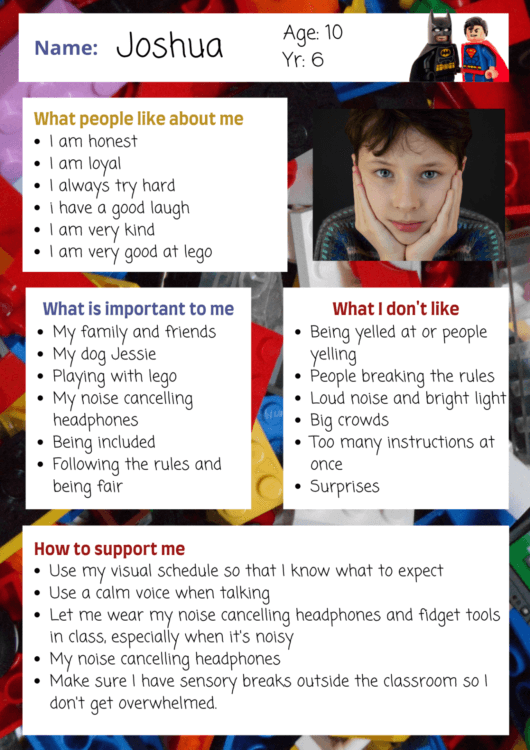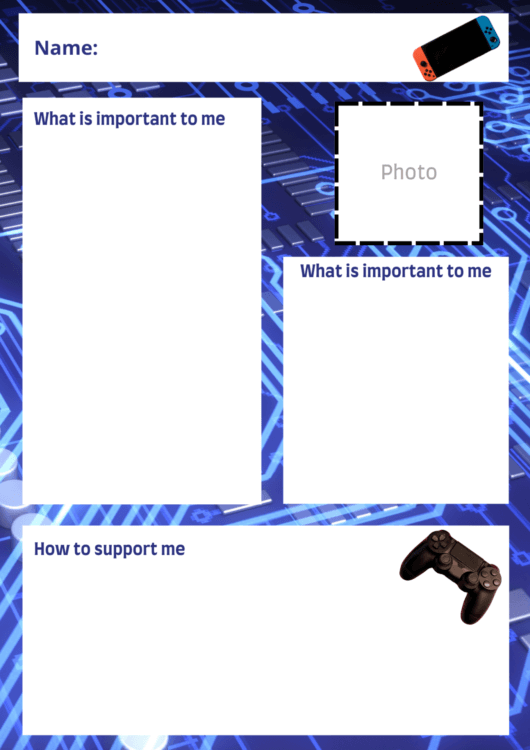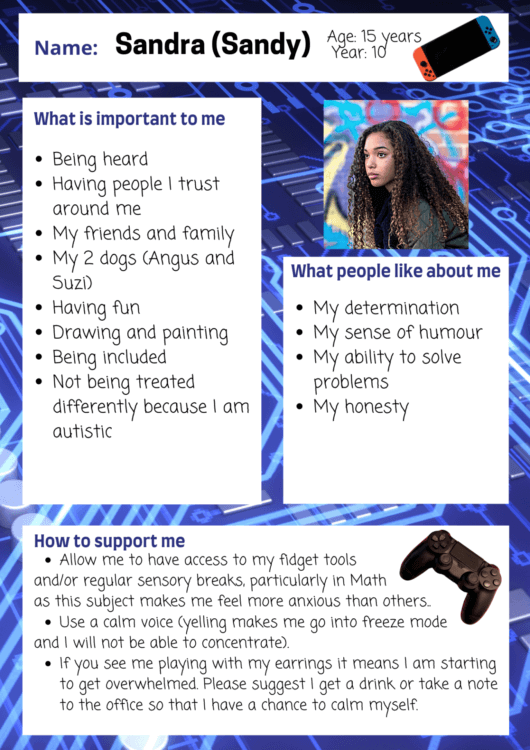
Early Childhood Education and Starting School (0-6 years)
Table of Contents
Introduction
Choosing an Early Childhood Education and Care setting is a big decision for all parents, and more so when you have a child with a disability. There are all the usual things to consider, such as seeing that the setting is safe and well run. But you also need to know the childcare provider can give your child the supports they need to be included in learning alongside other children.
It is important to visit the centres you are considering and talk to key staff about your child, their strengths, and where they need some extra support. Ask them:
- How do they practice inclusion?
- What do they do to help all children to participate and feel they belong?
- What kinds of support can they provide? and
- Will they need assistance to support your child?
Childcare
Preparing for Childcare Checklist
Here are some ways you can help the childcare service to be ready and have the information and skills they need to support your child:
- Ask your child’s therapists to visit the centre to talk to staff, giving them information and some strategies they can use to support and communicate with your child.
- Write out your child’s strengths and the areas where they need more support. You could do this as a One Page Profile so that all staff can easily see the main information about your child. See page 45 on One Page Profiles.
- Use a communication book to help with everyday communication between home and the childcare centre.
- Understand that it may take your child longer to settle in, so be prepared to spend more time there at first, or to pick up your child early.
Inclusion Support Program (ISP)
The ISP is a free service that helps childcare services to overcome barriers so that all children can be fully included. If an early education and care service feels they will need it, they can ask for extra support. The WA Inclusion Agency (WAIA) employs a team of Inclusion Professionals to provide tailored support and advice to early childhood education and care services. The childcare service sends WAIA a Request for Inclusion Support form, along with a signed parent permission form.
WAIA will then visit the childcare service and meet with staff and develop a strategic plan that sets out the best supports and actions that are needed to overcome the barriers to inclusion. Services can also apply for funding for extra staff and can borrow specialist equipment if it is needed. It is very important that childcare services keep families informed about the inclusion support they are providing. Families can talk to the service directly, and with the Inclusion Professional at the centre, or you can call the WAIA Helpline on 1800 119 247.
Here are some things you can do to help your child get ready for childcare:
- Go to the centre with your child just to visit, so they can meet people and see what happens there. Take some photos while you’re there, to look at and talk about later. You can ask the centre for photos of the staff who will be working with your child as well.
- Talk with them about going to childcare and the fun things they will do.
- Talk about the people there, using their names if you can, so they begin to feel familiar.
- Talk about when they will go, who will take them and who will pick them up
Starting School
There’s a lot to think about when it comes to choosing a school for your child. So it’s a good idea to start thinking about it early and take it step by step. Thinking about the kind of life you want for your child is a good place to start. Most families will say they want their autistic child to have the same opportunities as other children and grow up to have a fulfilling life like anyone else. This usually means a happy life that includes friendships and relationships, a job they enjoy, the chance to keep learning, having their own place, making their own decisions, and really belonging in a community that values them.
It can be daunting to think ahead, but it’s good to have a vision for the future. It helps to set the scene for thinking about possibilities and helps with making decisions in line with that vision.
Choosing a school
This section has the main things to think about when you are choosing a school for your young child. Some families, especially if they have older children at school, will already know which school they want their autistic child to attend. This information will still help with preparing your child for school and may be useful when things don’t always go according to plan.
Your child’s legal rights
Hopefully, you won’t need to use legal information, but it is always useful to know about education rights just in case.
According to law, Australian children with disabilities, in every state and territory, have the right to access and participate in education on the same basis as children without disabilities.
The law that covers these rights is the Commonwealth Disability Discrimination Act 1992. The Act also has Education Standards that set out what schools and other education providers must do.
Schools and other education providers must not treat children with disabilities differently from other children. This is discrimination. They must also provide ‘reasonable adjustments’. This includes things such as support staff, equipment, materials, modifications, and other things each child needs to support them to learn. This does not mean being told your child should learn in a separate learning environment because that is where the specialist support is located. Children with disabilities have the right to the supports they need to learn alongside other children in mainstream settings.
If the school you choose will not accept your child into the mainstream or provide the support they need, you can get support from an advocacy organisation to negotiate with the school. You can also get help to make a formal complaint to the Australian Human Rights Commission.
Knowing these rights gives you the knowledge and confidence that you can approach any school in any system and know that by law they must treat your child the same as any other child.
Making Decisions About Schooling
Here is a step-by-step process to help you gather the information you need and make decisions.
Step 1: School Systems in WA
There are four schooling system options to consider – Government, Catholic, Independent, and Home-schooling. It is important to find a school that not only suits your child but fits in with your family. When you are making a decision about which school systems you might consider, think about:
- Your philosophy on education. Do you want a private or public school, same-sex or coeducational?
- Your religious beliefs.
- The financial cost of each system and your family’s circumstances.
Talk to friends, relatives, and other parents to hear what they say about different schools, but you and your family need to be happy that the school you have chosen is a good match. Here are some websites with further information about each system.
Department of Education Department of Education
Every child from Pre-primary to Year 12 is guaranteed a place at their local public school. There are ‘catchment areas’ for most schools, so where you live can determine which school your child is able to attend.
Catholic Education of WA Catholic Education WA
You don’t need to be Catholic to go to a Catholic school. But, it is important to put your child’s name on the waiting list as early as possible if this is your preferred option.
Association of Independent Schools Association of Independent Schools WA
Each independent school is different, so you need to look at each school’s website to find out information about that school and how to enrol.
You don’t need to follow a particular religion to enrol in most independent schools, but it is important to put your child’s name on the waiting list as early as possible, if this is your preferred option.
Home-based learning Home Education WA
This website has information about home-schooling, the legal requirements, the curriculum range, and assessments required. It is also a support network for families who are home-schooling.
Legal requirements and registration for home schooling process is on the Department of Education website.
The SWAN website also has an article about home schooling options, available here.
There are also different types of placements within the different school systems.
School of Special Educational Needs: Disability (SSEND)
SSEND provide support to public schools to make sure that students with disability are able to access the curriculum, as well as their peers, can. Services include:
- Advice and training for staff
- Intensive student support
- Assistive technology e.g., mobility equipment, hardware and software
Mainstream
This is a regular classroom where students of all abilities learn together. The teacher will provide work of an appropriate level for different students, and also have whole-class activities. Each student with disabilities should have their own Individualised Education Plan (IEP). The teacher should have assistance from other staff in the classroom to ensure students get the support they need. Children in public mainstream settings have access to visiting teacher (SSEND) support, and most schools will also allow your child’s therapists to visit them at school to provide additional support. It’s a good idea to check with the school that they will allow therapists to visit before you enrol your child.
Note: Private mainstream schools do not have access to support from SSEND and may not provide an Education Assistant (EA) if your child needs one. Private schools are funded differently for these types of supports. Make
sure that you ask about how your child’s needs will be supported if you are considering enrolling at a private school.
Some mainstream schools may also have an education support class within them.
Education Support Centre
These are clusters of classrooms specifically for children with a disability on the same grounds as some mainstream primary schools. The centres have their own staff including their own principal and teachers who work with children in the centre as well as some support in the regular school.
Education Support School
This is a separate school for students with disability. There is often on-site therapy and nursing available.
Step 2: Finding the Best Match for Your Child and Family
Schools need to be a good match educationally, practically and financially.
Think about your family situation.
- Do you have other children already at school? Do you want all your children to be at the same school?
- How far can you travel to get to school?
- Do pick up and drop off times fit with your work and other things you have todo?
- Are you prepared to pay school fees?
Think about your child.
- What are their strengths? What are they good at?
- What do you think they need to experience and learn?
- What learning situation do you think will work best for them?
- What are their likes and dislikes? What motivates them?
Think about the school situation.
- What type of school would suit your child?
- What class size would be best?
- What support do they need in the school?
- What support do they need in the classroom?
Step 3: What Do I Look for in a School?
When you are researching schools, you are:
- Collecting as much information as you can to get a good idea of whether this school will be able to provide a great education for your child.
- Trying to get a feel about whether this school is a positive and welcoming
place to be. - Finding out if the school is flexible, and willing to work with you to support
your child.
Contact the school and ask to arrange a visit to see the school and classroom. Ask to talk to the teacher as well as the Principal and/or Learning Support Coordinator and the office staff. This will give you more information and help you get a better feel for what the everyday school experience will be like.
The key things that you are looking for are:
- School staff with a positive attitude.
- Staff willing to be part of a team approach.
- Staff willing to learn how to support your child’s learning and inclusion.
Step 4: Enrolment
There will be forms to fill in, and you will need to provide some documents. Ask the school how to do the enrolment and what documentation you need to show them.
You will need to confirm the place, and potentially pay a deposit. Ask when this needs to be done. If you don’t hear back from the school, get in touch to make sure the placement is confirmed.
Prepare a package of information for the school and your child’s teacher. This could include an information booklet about your child, a One Page Profile, and anything that could be useful such as medical information, contacts for therapists and so on.
Talk with the school about extra support they may need to arrange in time for your child to start school.
- Will they need equipment and/or Education Assistant support time?
- Do staff need any specific training?
- Do you want therapists to work with the school?
- Assist with information required for any funding application. For example, the school will need a copy of your child’s diagnostic report to apply for funding for an Education Assistant.
TIP: Keep all paperwork in a file so that you can find it easily and refer back to it if needed. Keeping a back-up copy of this paperwork in the cloud is also a good idea
Step 5: Helping Your Child Get Ready for School
- Show your child the school environment before school starts. Take photos of the classroom, playground, office, library, and assembly areas. Then you can look at the photos and talk about what happens in each of these places in the weeks before they start school.
- Create a visual schedule of the morning routine, including going to school. Your therapists can help you with this, or you can search for examples using Google.
- Help your child be as independent as possible. Let them practice getting dressed/undressed, opening food containers, putting things in and out of their school bag. Visual schedules can help with learning what to do.
- Does your child recognise their written name? If not, mark their possessions with something that they will recognise as their own, as well as their name.
- If your child needs to change uniform in school (e.g., for sports) and can’t tell the back from the front or inside from outside, sew a small piece of fabric or put a mark on the back inside seam of all clothes and help them to use it to help with dressing correctly.
- Buy shoes with Velcro fastenings rather than laces or replace the laces with flat elastic and leave them tied up permanently.
- Let your child practice eating their lunch from a lunchbox during the holidays. Pack food that they can open independently. For example, greaseproof paper or a paper bag instead of clingwrap? If they can’t open small packets or bars, it will be easier if you snip them open a little.
Do they know which food is for recess and which is for lunch? Think about having two colour-coded containers so they know which is which. - Teach your child to drink from a water fountain. If you give them a juice pack, then puncture the plastic wrap on the straw so they can take it out easily. If they have a drink bottle with a screw top, teach them to open and close it.
- If your child is likely to ‘wander’, buy an identity bracelet with their name and your mobile number engraved on it. It may never be needed but it will give you some peace of mind. If your child cannot cope with a bracelet, you could add your phone number to the name labels in their clothes.
- If you know who is going to teach your child next year, get to know them in advance and discuss the start of the year. Give them a one-page profile or booklet about your child. Staff are at school for two days before students start so if you don’t know who the teacher will be, contact the school two days prior to school starting. You can organise to bring your child for a visit before students start, so they can meet their teacher, see their classroom, desk etc.
- Establish a form of constant communication with the class teacher and education assistant (if applicable). You need to know what is happening each day so that you can talk to your child about their day. A communication book is a good idea so that you can swap information between school and home and back to school.
- Remember that your child’s teacher may feel as uncertain as you did when you first discovered your child has a disability. Give them time to adjust and get to know your child as an individual (at least the first half of the first term). Share any useful information with them and let them know about any training they can do.
- If your child’s teacher has taught an autistic student before (including an older sibling), the teacher may assume that they are well prepared. However, as the saying goes, ‘if you’ve met one autistic person, you’ve met ONE autistic person’. You may need to explain to them that all autistic kids are different, and that autism affects everyone differently. Offer to meet with them in the first few weeks of term, to discuss your child’s needs, and how to support them.
- The first day of school can be very chaotic, for teachers and students alike. If your child finds crowds and noise overwhelming, you may consider starting school on day 2 or week 2, when things are a little more settled.
- Do not over-commit yourself on rosters to help in the classroom. Your child will learn to become independent more easily if you are not there. However, you can volunteer your time to help at school as you would for any of your other children.(Adapted from Down Syndrome Australia’s and other ready for school checklists)
If your child is happy to go to school, be pleased and remember that the learning process takes time. Remember, no child will learn to read and write on their first day at school.
School is a big transition. Your child may need extra support and time to rest. Don’t overload your child with activities after school as they need to relax and play, the same as any other child.
Step 6: Working with the School
Perhaps the most important factor when it comes to your child’s education is working in partnership with the school and its staff. An effective partnership involves good communication, sharing of knowledge, respect, and being able to work in different but complimentary ways towards a common goal.
Getting to Know Your Child
The teacher will appreciate information about your child as soon as possible, and definitely by the start of school. This helps them to understand the support your child needs, how to communicate with them, what interests and motivates
them, dislikes, and triggers, and how to include them in the classroom. Teachers also need to know about any health issues and therapy goals.
You can help by putting together some information about your child. There are different ways of doing this. Some parents put together a booklet of information about their child, and some create a One Page Profile.
One Page Profiles
A one-page profile is a great way to communicate important information about a person all in one easy-to-find space.
You can use them in all kinds of settings to help support people of all ages. For example, you might create a child’s first one-page profile when they are just about to start going to childcare. Starting kindy, pre-primary or school are also
good times to create or update your child’s profile.
Because the information is all on one page, this means that anyone reading it can quickly see what is most important to know about the person. The one-page profile is a good ongoing reference for teachers, child care workers, and other support staff, and helpful for new or relief staff so they don’t have to read lots of information before they can start their work.
Each one-page profile has the following categories of information in it:
- Name of the person
- What is important to me
- What people like and admire about me
- How I want to be supported
How to Make a One Page Profile
There are lots of downloadable templates you can use. You can make your own but be sure it has the same categories of information as we’ve listed above (or note previous page if that is where it falls). These have been shown over many
years to be the most effective.
Sometimes parents work by themselves to write their child’s profile. With a veryyoung child, this is fine, and parents do know their children and the support they need well. But as your child gets older, it is better to ask other people who know them well to take part in writing the profile. You might be surprised that other people often add some very positive and useful information that you might not have known or thought about. Older children and adults can either write their own or get help to create or contribute to their profile.
One-page profiles need to be updated regularly so that the information is current. It’s a good idea to put the date on the profile.
This website has lots of helpful information on creating a one-page profile:
WordPress One Page Profiles




Communication
It is really important to have regular, open communication between you and your child’s teacher and education assistant (if they have one), if you are going to have an effective partnership. You can share useful information, celebrate achievements and deal with small problems before they become big problems. This is especially important when your child is very young and/or doesn’t use speech to communicate.
Parents need to know what happened at school so that they can encourage their child to talk about the day and liaise with therapists to address any issues.Teachers need to know if there is anything at home that is either something positive to talk about with your child or that might be affecting their learning.
Most parents and teachers find that a communication book between home and school is the easiest way to keep up two-way communication about daily details. You can just use a small school exercise book. Often the teacher will provide this, or you could supply one if preferred. It need only take a few moments for a teacher to write that it was a good day, to ask a question or report an achievement. Parents can write a quick thanks, let the teacher know their child could be tired, sad, excited for some reason or, give other information that the teacher can use to chat with your child. Talk to your child’s teacher before or when school starts, and work out a system that works for everyone.
When your child is ready to start school, read SWAN’s booklet for children aged 7 to 12 years. This includes more practical information to help you during your child’s primary school years.
Education and the NDIS
Although the NDIS can fund a range of specialised supports for school-aged children with a disability, it will not fund anything that should be the responsibility of the education system. Schools must continue to provide ‘reasonable adjustment’ for students with disabilities so that they can learn on an equal basis with other children.
The NDIS will fund allied health and other therapy supports such as speech therapy, OT, and other allied health depending on what each child needs because of their disability. These can be provided at school.
The school will work with you to develop your child’s educational goals and create an Individual Educational Plan (IEP). Therapy plans should be consistent and directly related to the outcomes in your child’s IEP.
Here is a summary of what NDIS funds and what education systems can fund for children with disabilities.
NDIS funds:
- Self-care at school related to the student’s disability, such as support with eating.
- Specialised training of teachers and other staff about the specific personal support needs of a student with disabilities.
- Specialist transport required because of the student’s disability (does not replace parental responsibility).
- Transportable equipment such as a wheelchair or personal communication devices.
- Therapies a family and school have agreed may be delivered during school time but are not for educational purposes.
Education systems fund:
- Teachers, education assistants, and other supports e.g., Auslan interpreters.
- General support, resources, and training for teachers and other staff.
- Therapy delivered in schools for education or training purposes, such as allied health practitioners helping teachers and trainers adjust curriculums.
- Aids and equipment to make curriculums accessible, such as modified computer hardware, software, Braille textbooks, other accessible information formats.
- Adjustments to buildings such as ramps, lifts, accessible toilets, and hearing-loops.
- Transport for educational or training activities such as excursions, field trips and sporting carnivals.
- Day-to-day supervision of students at school, including behavioural support. You can find more information on the NDIS website:
NDIS & School Education

